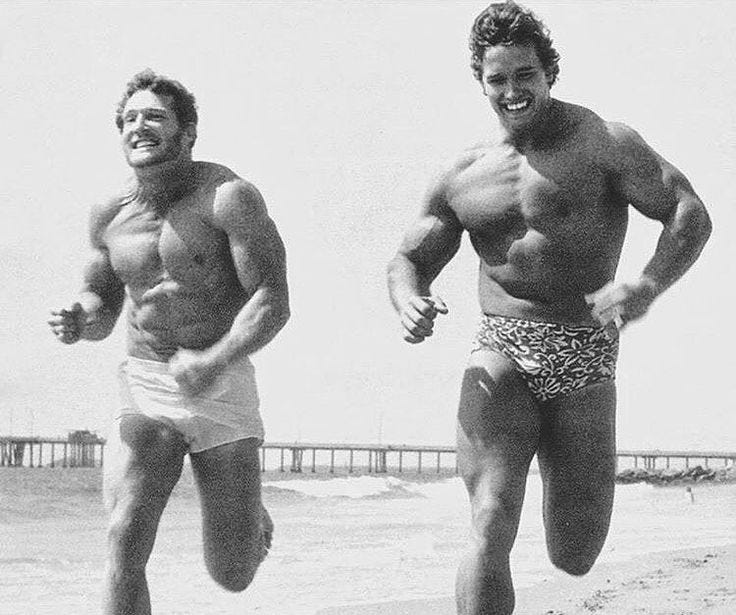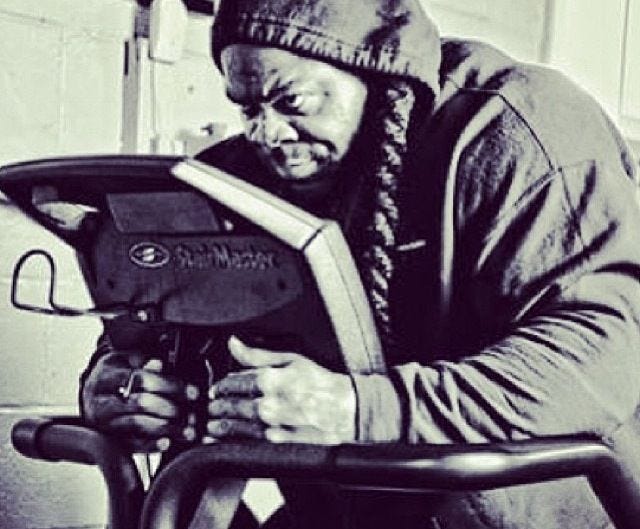Doing cardio is now labeled as “hybrid” but it should be normal for everyone. Even old school bodybuilders would regularly do cardio. Most people over think it when it comes to adding aerobic work into their training.
“Cardio will kill your gains.”
Athletes in most sports will do a ton of conditioning in practice and often still not have an issue putting on muscle mass. Football is a prime example of how you can do hours of running and drilling, hit the weight room, and still get freaky strong and conditioned. Yet, gym bros are still worried hitting the stairmaster for 20 minutes twice a week will somehow lead to overtraining or muscle loss.
Don’t get me wrong, there is a wrong way to implement cardio into your routine and you could definitely over do it or just under optimize your plan. Here are some principles to keep in mind to create a routine that works.
1.) Do what’s most important first
You want to have all the resources available for what’s most important. This means if gaining muscle or getting a better physique is most important to you, then lift first and do cardio afterward or on an off day.
I’ve also heard the advice to leave your body with the signal you want most at the end. If you want aerobic adaptations primarily, then work in cardio at the end. This logic makes sense for somebody like a triathlete where they’ll do strength training first because they want general strength, performance, and injury prevention benefits from it but really the most important aspect of their training is endurance.
Doing the most neurologically demanding work (ex: compounds lifts, plyometrics, sprints, or other high velocity movements) first tends to make the most sense. Striking an appropriate balance really depends on your end goal. You can’t expect to smash your legs with high intensity intervals on a bike and expect to squat a new PR immediately after and vice versa.
2.) Use Heavy, Medium, Light Concepts to Regulate Intensity & Manage Fatigue
If you go heavy in training then go light on cardio that day or for your next session. Conversely, If you do intense interval training then take the next day off or go light on your training. This could also mean just doing shorter bouts of intense interval work (8-12 minutes instead of 15+ minutes) as a “light” session.
You can also alternate between low, medium, and high days. Your plan will never be perfect, but try to avoid doing something like max effort lower body Monday, max effort upper body Tuesday, high intensity bike intervals Wednesday. In that example you’re slamming yourself with high intensity for 3 consecutive days. Not ideal.
3.) Remember the Intereference Effect
I’m not going to fear monger you with the exercise science about the interference effect. If you train legs heavy and then do 30-minutes of stairmaster afterward, you likely won’t maximize leg muscle gain. However, you’ll still gain muscle, it may just be a bit less than if you only lifted. It’s also important to consider the long term of not ever doing cardio. If after a training day is the only time you have for cardio, it’s better to hit it then skip it forever.
Couple things on that note.
Cardio won’t necessarily “kill your gains”, it just upregulates cellular signaling that emphasizes another pathway (AMPK vs. mTOR) because you’re now sending multiple cellular signals instead of just one. Cellular signaling is complex, bu hitting a CrossFit hero WOD after a full leg day is going to activate a lot more cellular messaging than just a stand alone leg day would. These signals compete with one another and have been shown to decrease your gains.
Keep in mind, although your gains are decreased, they are not eliminated.
You can minimize the interference effect by alternating body parts. Meaning, do stairmaster (lower body cardio) after upper body lifting to minimize interference or just do cardio on off days.
For most of the general public it makes sense to take the lower returns in exchange for better gains and health in the future. Aerobic training benefits such as increased work capacity, improved circulation, and better oxygen delivery can still have a benefit for strength and hypertrophy in the long run.
The Workout
Coopers Test
Max distance run in 12:00
Use this test to assess your aerobic fitness. Reassess after a conditioning program.
Strength Club Training
Block 3 Week 2
Continue with sets of 5 progressing from your last 5 x 5, if you feel good i’d go for a new 5RM since the program is concluding. Just make sure to still hit All 5 sets of 5 if you elect to do the rep max.
Get The Full Week Below ⬇️⬇️⬇️
Keep reading with a 7-day free trial
Subscribe to Weekly Flex to keep reading this post and get 7 days of free access to the full post archives.







